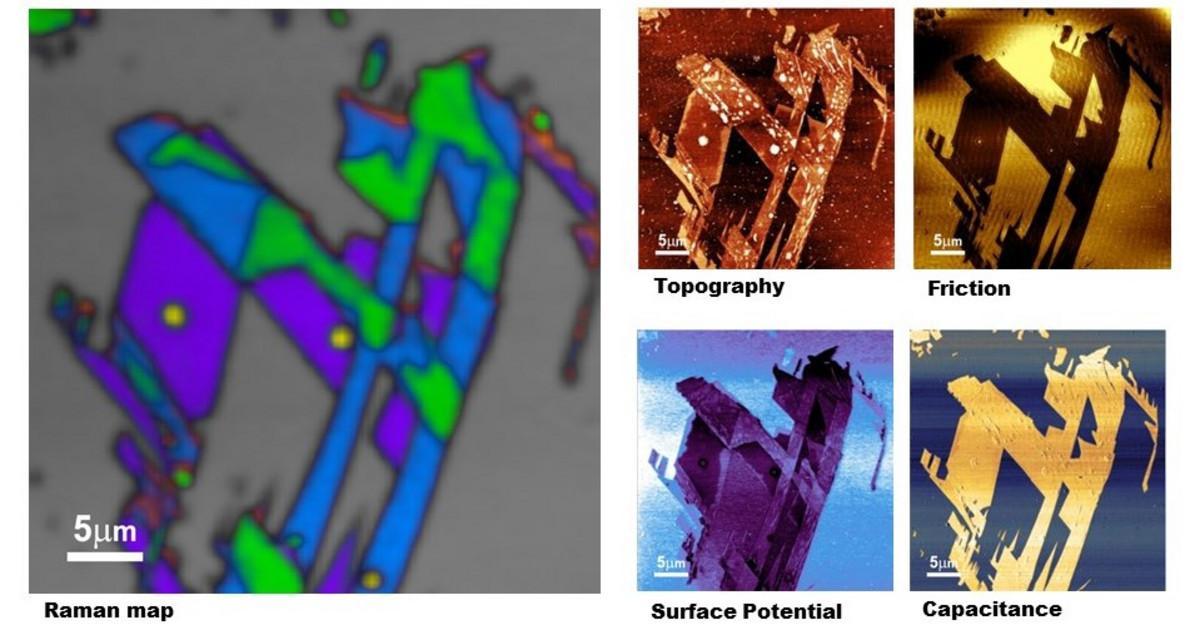

Graphene is a crystalline bi-dimensional material made of an atomically thick layer of sp2-bonded carbon atoms arranged in a honeycomb lattice. It was discovered in 2004 by A. Geim and K. Novoselov who received the Nobel Prize in 2010. Graphene has extraordinary properties, in particular, extremely high electron mobility, which opens up a large variety of applications in nanoelectronics, optoelectronics, and batteries. Strangely, the high electric conductivity of graphene has hindered its integration, but the recent development of semiconductor 2D materials, and their potential combination with graphene, has revived the integration of graphene into nanoelectronics devices. While graphene oxide was primarily considered as an intermediate form for large scale production of graphene due to its easy dispersability in water, graphene oxide is also of interest for a lot of applications as it can be functionalized or used as a non-conductive layer.
Raman spectroscopy is the characterization of choice for carbon phases in general, and for graphene and graphene oxide in particular, as it is non-destructive and provides a large amount of information such as defects, disorder, edge and grain boundaries, thickness, doping, strain and thermal conductivity. But the ultra high spatial resolution needed for the study of graphene nano-objects cannot be fulfilled using diffraction-limited Raman microscopy. However, tip-enhanced hyphenated techniques based on the amplification of signal from the nano-region under the tip will allow for actual nano-characterization. The recent development of side-illuminated TERS analysis even provides the possibility to investigate the behavior of graphene-based structures under device operation.
Real-time and Direct Correlative Nanoscopy
AFM-Raman for physical and chemical imaging
AFM-Raman for Physical and Chemical imaging
Versatile AFM Optical Coupling
HORIBA제품의 자세한 정보를 원하시면, 아래의 양식에 내용을 입력을 부탁드립니다.
